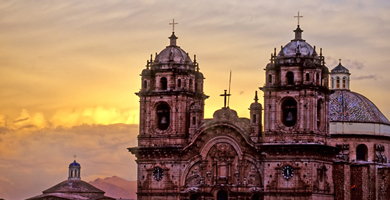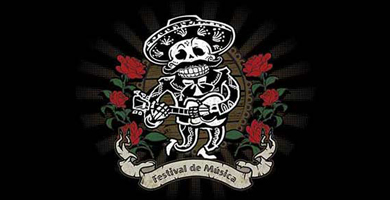Modern Mexico City
The capital’s passionate energy is a match for its many problems.
From the human sacrifices of the Aztecs to the violence of conquest and revolution, and on to the traffic gridlocks and frequent demonstrations of today, Mexico City has rarely been a tranquil place. And yet it inspires a fierce loyalty in many of its residents, who rise to the challenge of living on the edge of a volcano, and it usually delights visitors. Somehow, despite the odds, it seems to work. It’s safe to walk the streets by day and you can avoid the risk of kidnapping by calling a radio cab. Most of the gang shootings you’ve been reading about are happening in border cities. Pollution has eased, and there’s a burgeoning of stylish hotels, ambitious restaurants and creative boutiques, especially in the districts of Polanco and Condesa that flank Chapultepec Park. The historic core around the Zocalo is a bit scruffy, but several of the palaces have been restored and turned into lively museums—notably the Museo Palacio Cultural Banamex (Madero 17).
Mexico City is a palimpsest of cultures—quite literally around the Zocalo, where Colonial buildings flank the excavated ruins of the Aztecs’ Templo Mayor. The public areas of the Presidential Palace, other government buildings and the handsome Antigo Collegio San Idelfonso were muralled by Diego Rivera and his contemporaries during the nationalistic fervor that followed the revolution of the 1910s. The Bellas Artes, a wedding cake auditorium, is a monument to the before and after of that uprising. The exterior is a pompous pile of white marble with gilded domes that has strayed in from Belle Epoque Paris. The red marble interior evokes Radio City Music Hall—art deco with more murals, including Rivera’s homage to the workers featuring idealized figures of Marx and Lenin that dismayed the Rockefellers when he first painted it in New York.
There’s another historical layer cake in Chapultepec Park, where the Tamayo Museum of contemporary art sits alongside the Anthropology Museum, a modern monument with a cantilevered waterfall that houses the greatest collection of pre-Columbian artifacts. A movie shows the huge stone figure of the Aztec rain god being trucked across the city to its new site in the 1960s, provoking a torrential downpour.
Though poor, Mexico has always dreamed of grandeur. The Paseo de la Reforma, which slices through the city, is even more impressive than the Champs-Elysees in Paris, and the Avenida Insurgentes is one of the longest streets in the world. When you go to buy stamps at the Central Post Office, you are treated to a palatial staircase that seems to lead up to a skylit heaven of white columns and gilded capitals. The facades are a riot of carved stone ornament. Around the same time, the Gran Hotel on the edge of the Zocalo was dazzling visitors with its six-story atrium, stained glass dome, and open-cage elevators linking the stacked galleries. The fascinating Museo de Arte Popular (Revillagigedo 11) occupies the art deco palace that was once the central police station.
Just south of Chapultepec is the house that architect Luis Barragan built for himself in the 1940s, now home to the foundation that protects his work (Francisco Ramirez 14). Outwardly plain, its interior is all about harmonious spaces and the play of light; genius pared to its essentials. Enquire here about visiting other Barragan houses and his convent in Tlatlan, on the southern edge of the city. Barragan’s use of rough stucco and vibrant colors was inspired by the Mexican vernacular. Engineer Felix Candela looked to the future in creating thin concrete shells to roof churches, a Bacardi bottling plant and a market. Go see Los Manantiales restaurant in the outlying district of Xochimilco, where you can take a boat around man-made islands, as the Aztecs once did, or lunch under Candela’s soaring vault, which resembles a giant white flower.
Returning to the center, you can stop in the colonial village of San Angel to visit the newly restored double house that was built in 1930 for Diego Rivera and Frida Kahlo. It’s as sharp edged and brittle as the villas Le Corbusier was building then, and the two blocks–red for him, blue for her—are linked by a rooftop bridge. His studio, full of skeletons and paper-mâché figures, evokes the complexity of the man and the artist, as well as the city that inspired him.
GUIDE
For the well-heeled, the places to stay (at half what you would pay in New York or Paris) are the Four Seasons with its courtyard garden, and the St Regis, with its glass tower offering sweeping views. The natural warmth that enriches every encounter in Mexico adds a layer to the impeccable service for which these brands are known. Boutique hotels include Habita, a cube of translucent glass and raw concrete amid the commercial frenzy of Polanco, and the terminally hip Condesa df, which is named for the quiet district in which it’s located.
Condesa is a favorite haunt for architects, to build and establish their offices, and it has become a wonderful place to stroll and to eat. Contramar offers a light seafood lunch in an elegant version of an Acapulco beach shack (Durango 200; 5514 3169). Merotoro is a spin-off that stays open for dinner and serves such dishes as smoked mackerel and grilled tuna on greens in a cool room (Amsterdam 204; 5564 7799). Most of the star turns are in Polanco, and two of the best are Izote, (Masaryk 513; 5280 1671) where Patricia Quintana performs nightly miracles, and the minimalist Biko (Masaryk 407; 5282 2064) where Mikel Alonso creates delicious tasting menus inspired by his Basque mentor, Juan Mari Arzak. Downtown and in the Hilton Reforma, El Cardenal (Palma 23; 5521 8815) challenges adventurous gastronomes with chinicuilles (crisply fried worms), escamoles (ant eggs simmered in butter), and barbecoa (lamb wrapped in maguey leaves and slowly baked).
[simpleflickr set=”72157623537971706″ /]
Michael Webb
around the world.
Latest posts by Michael Webb
- DESTINATION: Revisiting the South of France - April 30, 2024
- Exploring the Czech Republic - January 29, 2024
- Rediscovering Morocco - April 6, 2022











you send me pleas information mexico-city and acapulco touristik.